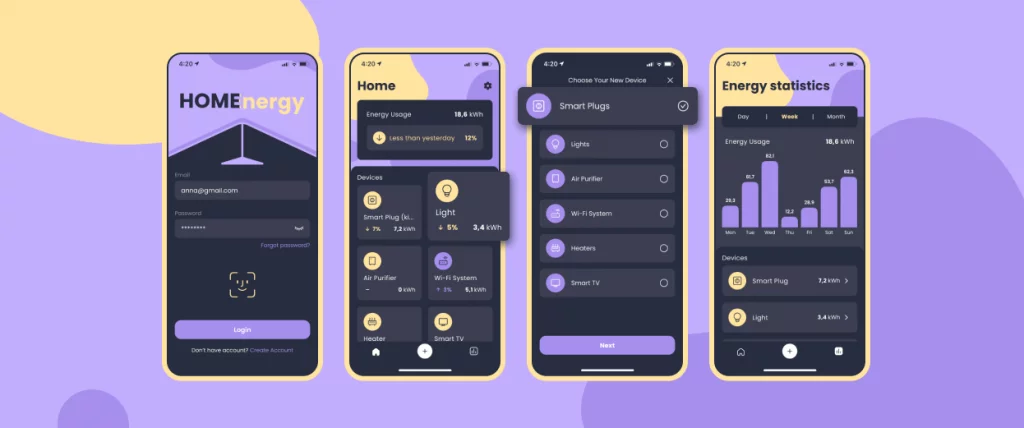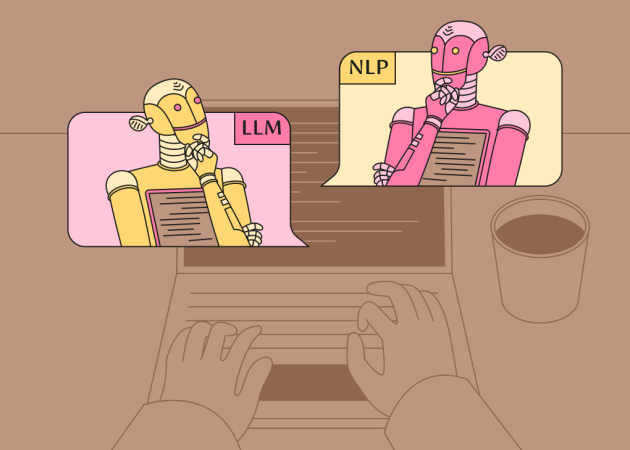
In-Demand Software Technologies for GreenTech Startups & Renewable Energy Providers
Contents
Contents
As technological advancements accelerate at an unprecedented pace, clean energy software and green energy technology are rapidly evolving to meet the needs of green tech startups, sustainable energy providers, and businesses striving to enhance their information technology and sustainable development processes. This progress is underscored by global efforts to mitigate the alarming rise in emissions, a challenge that is prompting cities and companies worldwide to transition towards cleaner resources, fuels, energy, and technologies.
This article explores the most in-demand software technologies that are proving instrumental for GreenTech startups and renewable energy providers. By leveraging sustainable software development solutions tailored specifically for GreenTech, businesses can optimize their operations while staying compliant and achieving the broader goals of environmental conservation and sustainable growth.
The Importance of Sustainable Software Solutions for GreenTech Startups
Key trends in CleanTech, such as renewable energy solutions, low-carbon construction, carbon capture, utilization, and storage (CCUS), green materials, alternative mobility, and sustainable automation, are reshaping industries by reducing environmental impacts. These innovations not only improve energy consumption management on a large scale but also empower individual consumers to monitor and control their carbon footprint, energy, and utility usage and make sustainable living choices.
In the context of these developments, the adoption of sustainable software solutions has become increasingly critical. By implementing best practices in sustainable software development, GreenTech startups and impactful companies can create more efficient and environmentally friendly applications. These solutions include:
- Energy-efficient algorithms: Software designed to minimize computational resources and energy consumption.
- Green cloud computing: Data centers and cloud services optimized for energy efficiency and powered by renewable sources.
- Sustainability reporting tools: Software that helps businesses track, analyze, and report their environmental impact and sustainability efforts.
- Smart building management systems: Integrated software solutions that optimize energy use in buildings, from lighting to HVAC systems.
The Critical Role of Sustainable Software Solutions for Renewable Energy Startups
The International Energy Agency (IEA) predicts that by 2025, renewable energy will become the world’s top source of power, with wind and solar generation surpassing nuclear power in the next two years. In 2023, the world added 50% more renewable technology capacity to generate clean electricity than in 2022, and this expansion is expected to surge over the next five years.
As renewable energy solutions continue to lead the charge in transforming the energy landscape, GreenTech startups in this sector are at the forefront of innovation, not only driving the adoption of clean energy but also setting new standards for sustainability in the industry. To scale and operate effectively, renewable energy startups must leverage sustainable software solutions that align with their environmental goals and enhance the efficiency and sustainability of renewable energy operations. Key components of these solutions include:
- Energy-efficient software design: Minimizing energy consumption by optimizing code and reducing the computational power required for operations. This directly contributes to the overall sustainability of the startup’s technology stack.
- Smart grid management systems: Implementing software that enables intelligent energy distribution and monitoring, allowing for efficient management of renewable energy sources.
- Predictive maintenance tools: Using software to predict and address equipment failures before they occur, thereby reducing downtime and the environmental impact associated with maintenance activities.
- Renewable energy monitoring platforms: Providing real-time data and analytics on energy production, storage, and consumption, enabling data-driven decisions.
- Sustainable supply chain management: Developing software that optimizes the supply chain for renewable energy projects, ensuring that resources are sourced and managed in an environmentally responsible manner.
Key Technologies Driving Software Solutions for GreenTech and Renewable Energy Startups
Innovation in clean energy software and green energy tech has accelerated rapidly, especially among GreenTech startups aiming to pioneer the market and produce the Next Big Thing in sustainable energy technology. As we focus more on sustainable development, the following digital technologies have become significant in CleanTech software development:
Artificial Intelligence
Artificial Intelligence (AI) is the simulation of human intelligence by computer systems used to handle complex processes and solve problems that typically require human input, such as data entry, aggregation, and analysis. Applied to renewable energy technology, AI can be leveraged to enhance efficiency, optimize operations, and drive innovation across various aspects of the industry, for example, in the following use cases:
- Predictive asset management: AI-driven maintenance systems analyze data from sensors embedded in wind turbines, solar panels, and across the broader renewable energy infrastructure and can predict equipment failures before they occur. This reduces downtime and maintenance costs while extending the lifespan of assets.
- Energy forecasting and optimization: Advanced AI models combine machine learning with real-time data from weather stations, satellite imagery, and sensor networks to predict renewable energy generation from solar and wind sources. These models allow operators to optimize power output, stabilize the grid, and manage energy storage more effectively.
- Smart grid management and demand response: AI algorithms enhance smart grid management by predicting energy demand and automating demand response strategies. This includes adjusting energy distribution based on real-time consumption patterns and integrating renewable energy sources more efficiently into the grid.
- Carbon footprint reduction and environmental impact assessment: AI-powered tools can assess the ecological impact of renewable energy projects by analyzing vast amounts of data related to land use, biodiversity, and carbon emissions. These assessments help GreenTech startups make informed decisions about site selection and project development, minimizing their carbon footprint and enhancing sustainability.
- Energy trading and market analytics: AI is revolutionizing the way renewable energy is traded in energy markets. Machine learning algorithms analyze market data, forecast price fluctuations, and optimize trading strategies to maximize profits from renewable energy generation. AI-driven platforms can also facilitate peer-to-peer energy trading, allowing customers to buy and sell excess renewable energy directly.
- Smart energy management systems: AI-integrated systems are increasingly used in smart homes and buildings to optimize household energy usage by learning and adapting to residents’ behaviors. These systems can automatically adjust lighting, heating, and cooling based on real-time data, reducing energy consumption and costs. AI also plays a role in integrating renewable energy sources with home energy management systems, ensuring efficient energy use and storage.
Internet of Things (IoT)
The Internet of Things, or IoT, is the network of smart devices and other physical objects containing sensors, software, and other technologies that enable them to connect to and exchange data with other devices and systems via the Internet. This network of interconnected technologies plays a transformative role in the green technology sector, allowing for seamless data exchange and communication, minimizing the need for human intervention while optimizing processes critical to sustainable energy production and management. Examples include:
- Digital twinning: On an IoT platform, digital twinning refers to a virtual representation of a physical asset, such as a machine, a vehicle, or a device. In the renewable energy industry, digital twins provide a virtual digital copy of physical assets, such as wind turbines, solar panels, or energy storage systems. These digital replicas allow GreenTech startups to monitor operations in real time, simulate different conditions, and predict the future performance of renewable energy assets.
- Smart grids: Advanced power systems that use digital technology to enhance the efficiency and reliability of the electrical grid. IoT devices, such as sensors and smart meters, can be used to monitor and control the flow of electricity in real time, allowing for more efficient distribution and use of renewable energy sources.
- Remote asset monitoring: IoT technology enables continuous monitoring of wind farms, solar installations, and other renewable energy assets, ensuring that they operate within optimal parameters. Sensors track performance metrics and send alerts when anomalies are detected, allowing for immediate intervention and predictive maintenance.
- Ring-fencing: Physical assets can be tracked remotely, ensuring high-value assets are protected from theft and tampering by external threats. With IoT-connected fleet logistics and ring-fenced assets, CleanTech companies can also improve efficiency and safety processes
Data Science & Analytics
Data science and analytics, particularly those powered by AI and machine learning, are crucial for driving innovation and efficiency in the GreenTech and renewable energy sectors. By leveraging advanced data analytics, startups can gain valuable insights, streamline operations, and improve decision-making that align with their sustainability goals. Examples include:
- Predictive maintenance: Data-driven analytics monitor renewable energy assets like wind turbines and solar panels to predict maintenance needs, reducing downtime and extending equipment lifespan.
- Energy efficiency optimization: Analyzing usage patterns and operational data helps extend the life of solar panels and other renewable technologies by optimizing maintenance and performance.
- Demand forecasting: Advanced tools predict energy demand by analyzing historical data and weather patterns, improving resource allocation and minimizing waste.
- Environmental and business monitoring: Data analytics track carbon emissions, energy production efficiency, and customer satisfaction, supporting informed decisions that enhance sustainability and performance.
- Weather prediction for energy management: Analytics integrate weather data to optimize renewable energy production and storage, ensuring a consistent supply.
- Regulatory support: Data-driven insights help regulators and policymakers make informed, sustainable decisions for the industry.
- Digital asset management: Advanced platforms streamline the management of digital assets related to renewable energy technologies, maximizing their efficiency and contribution to sustainability goals.

Cloud Computing
Cloud Computing provides on-demand delivery of IT resources via the internet and is typically priced with a pay-as-you-go model. Businesses can scale GreenTech infrastructure more affordably with cloud computing, such as Amazon Web Services (AWS). Businesses operating with cloud computing can access increased computing power, data storage, and databases without owning or maintaining their own physical servers and data centers.
Cloud computing is especially beneficial for green technology, and renewable energy providers with plants and machines in remote, difficult-to-reach locations, ensuring consistent operations monitoring that makes efficiency and maintenance scheduling possible without on-site personnel. Examples include:
- Data collection: With cloud computing software, data collection is simplified, along with analysis and reporting.
- Storage monitoring: Monitor your data storage and access data remotely via a smart device.
- Machine analytics: A common use of Cloud Computing is to monitor machine analytics, increasing the efficiency of Green Tech software and other sustainable energy technologies.
- Battery aggregation: multiple smaller assets can be combined to act as a larger asset for the provision of specific sustainable energy system services.
Application Development
Renewable energy software application development enables and simplifies sustainable energy operational processes, facilitates remote monitoring and technology operations, and enables clean energy and technology solutions to better serve and communicate within their industry.
Examples include:
- Smart energy monitoring systems;
- Inverter intelligent monitoring systems;
- Custom renewable energy management solutions;
- Energy mobile app solutions;
- Carbon footprint monitoring apps;
- Waste and recycling apps;
- Apps to track water usage;
- Community and environmental awareness apps.
Case Study: Homenergy — Empowering Households to Reduce Carbon Emissions
As a dedicated tech partner for GreenTech companies, we continuously invest in research and development to stay current with industry innovations. One of Beetroot’s ongoing R&D projects, the Homenergy app, focuses on household electricity management, a critical area where B2C software solutions can drive significant reductions in carbon emissions. Here’s a glimpse of its key features:
- Power usage breakdown: The app provides detailed charts and dashboards that show energy consumption by time, day, week, and month, as well as by individual smart devices, allowing users to monitor and manage their energy usage effectively.
- Multiple appliances connection: Homenergy connects with various smart devices in the home, allowing users to control everything from lighting to WiFi systems directly through the app.
- Data collection and security: The app collects essential data from connected devices to generate accurate usage insights while ensuring all data is encrypted during transit.
- Innovative architecture: Homenergy is built using the Expo SDK for native iOS and Android development. The app’s backend leverages AWS services like Lambda for serverless computing, SNS for real-time notifications, and DynamoDB for robust data management, ensuring the app is both scalable and secure to meet the evolving needs of modern households.

Homenergy represents our team’s commitment to developing cutting-edge solutions that contribute to a cleaner, more sustainable future. Read the full case study here to explore more details about the features and current state of this project.
The Value of Partnering with a Sustainable Vendor for Clean Energy Startups
At Beetroot, we focus on providing sustainable initiatives that match and augment our partner companies’ environmental mindfulness and sustainability goals in green energy tech and sustainable energy production and provision. Our mission as a tech ecosystem is to create a compound social, economic, and environmental impact at scale, and our values are central to how we operate.
To achieve true sustainability and meet green energy targets, your team members have to share your organization’s values and ideals. Beetroot partners with like-minded businesses to create a unique synergy by providing top tech talent who aligns with your goals and values and positioning your company for successful growth.
We understand that scaling up teams can be challenging, especially when talent recruitment is competitive and time-sensitive. Many GreenTech startups and companies face talent gaps and need top tech talent immediately—not months or years down the line. Beetroot’s dedicated team model streamlines this process by sourcing, vetting, and managing top green technology software engineers who integrate seamlessly into your team while we handle all administrative tasks.
From optimizing large-scale operations to specialized green technology projects, we help you develop scalable solutions that meet your specific needs while balancing ROI and sustainability goals. Whether you need to expand your team or tap into cross-industry expertise to develop robust software solutions for the green sector, Beetroot is here to support your growth.
Subscribe to blog updates
Get the best new articles in your inbox. Get the lastest content first.
Recent articles from our magazine
Contact Us
Find out how we can help extend your tech team for sustainable growth.







